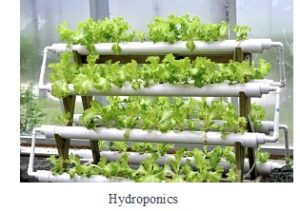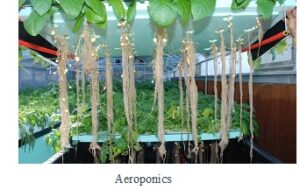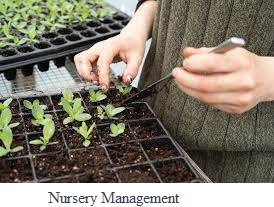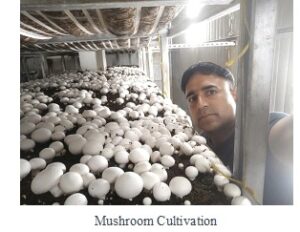Nursery Management: Best Practices for Growing Healthy Plants
Nursery management plays a crucial role in ensuring the success of agricultural operations. A well-managed nursery can provide healthy and vigorous seedlings that can withstand various biotic and abiotic stresses. In this blog, we will discuss some of the best practices for nursery management that can help growers produce high-quality plants and achieve optimal yields.
- Seed Selection: The selection of high-quality seeds is essential for producing healthy and vigorous plants. Growers should choose seeds that are disease-free, genetically pure, and have a high germination rate. It is also essential to select seeds that are adapted to the local climatic conditions and soil type.
- Soil Preparation: Soil preparation is critical for ensuring the proper growth and development of plants. Growers should prepare the soil by removing weeds and debris, adding organic matter, and testing the soil for nutrient deficiencies. Proper soil preparation can help ensure that plants have access to the nutrients they need for optimal growth.
- Irrigation: Proper irrigation is essential for maintaining plant health and productivity. Growers should develop a watering schedule that is tailored to the specific needs of their plants. The frequency and amount of watering will depend on factors such as the plant species, soil type, and climate.
- Pest Management: Pests can cause significant damage to plants, leading to reduced yields and even plant death. Growers should implement an integrated pest management (IPM) program that includes both cultural and chemical control methods. This can help reduce the need for pesticides and minimize the risk of environmental contamination.
- Disease Control: Disease control is another critical aspect of nursery management. Growers should implement preventative measures, such as selecting disease-resistant plants and maintaining proper hygiene practices. Regular monitoring and early detection of disease can also help minimize the impact of plant diseases.
Conclusion: Nursery management is an essential aspect of agriculture that can impact plant health, productivity, and overall farm profitability. By following best practices for seed selection, soil preparation, irrigation, pest management, and disease control, growers can produce healthy and vigorous plants that can withstand various biotic and abiotic stresses.
Mushroom Cultivation:
Mushroom cultivation has become increasingly popular in recent years, as people look for new ways to grow their own food and explore sustainable agricultural practices. In this blog post, we will explore the basics of mushroom cultivation and provide some tips for those looking to get started.
- Choose Your Mushroom Species: The first step in mushroom cultivation is to choose the species of mushroom you want to grow. Some popular options include shiitake, oyster, and button mushrooms, which are relatively easy to grow and widely available.
- Prepare the Growing Substrate: The next step is to prepare the growing substrate. This can include a variety of materials, such as straw, sawdust, or compost. The substrate should be sterilized to remove any unwanted bacteria or fungi and create a clean environment for the mushrooms to grow.
- Inoculate the Substrate: Once the substrate has been prepared, it is time to inoculate it with mushroom spores or mycelium. This can be done by adding spores to the substrate or by using pre-inoculated spawn, which contains mycelium and is designed to speed up the growth process.
- Incubate the Substrate: After inoculating the substrate, it is time to incubate it. This involves keeping the substrate at a specific temperature and humidity level to encourage the growth of the mycelium. This can take anywhere from a few days to several weeks, depending on the species of mushroom and the growing conditions.
- Fruit the Mushrooms: Once the mycelium has colonized the substrate, it is time to fruit the mushrooms. This involves creating a humid environment and exposing the substrate to fresh air and light. Within a few days, mushrooms should start to appear, and they can be harvested once they have reached the desired size.
- Repeat the Process: After harvesting the mushrooms, the substrate can be reused to grow another batch. Simply repeat the process of sterilizing the substrate, inoculating it with spores or mycelium, and incubating it until it is ready to fruit.
In conclusion, mushroom cultivation can be a fun and rewarding hobby, as well as a sustainable source of food. By choosing the right species of mushroom, preparing the growing substrate, inoculating the substrate, incubating it, fruiting the mushrooms, and repeating the process, anyone can start growing their own delicious mushrooms at home.

Hydroponics:
Hydroponics is a unique method of growing plants without soil. It involves growing plants in a nutrient-rich solution that is delivered directly to the plant roots. This technique offers many advantages over traditional soil-based gardening, including better control over plant growth and yields, as well as more efficient use of water and fertilizers. In this blog post, we will explore the basics of hydroponics and its benefits.
- What is Hydroponics? Hydroponics is a method of growing plants in a nutrient-rich solution, without the use of soil. Instead, the plant roots are supported by an inert medium, such as perlite, coconut coir, or rockwool, and are fed with a nutrient solution that is delivered directly to the roots. This allows for precise control over the growing conditions, including pH levels, nutrient levels, and water supply.
- Benefits of Hydroponics: Hydroponics offers several benefits over traditional soil-based gardening. For one, it requires less water, as the nutrient solution can be recycled and reused. Additionally, it eliminates the need for pesticides and herbicides, as the plants are grown in a controlled environment with no soil-borne pests. Finally, hydroponics can lead to higher yields, as plants receive a constant supply of nutrients and water, and grow more quickly than those grown in soil.
- Types of Hydroponic Systems: There are several different types of hydroponic systems, each with its own advantages and disadvantages. Some popular options include:
- Deep Water Culture: Plants are grown in a nutrient-rich solution that is continuously oxygenated.
- Ebb and Flow: Plants are grown in a tray that is periodically flooded with nutrient solution.
- Drip Irrigation: Nutrient solution is delivered directly to the plant roots through a series of drip emitters.
- Aeroponics: Plants are grown in a misted environment, with nutrient solution delivered through a fine mist.
In conclusion, hydroponics is a fascinating and innovative method of growing plants without soil. With its many advantages over traditional gardening, including better control over plant growth and yields, more efficient use of water and fertilizers, and the elimination of soil-borne pests, it is an excellent option for anyone interested in sustainable and efficient gardening.

Aeroponics:
Aeroponics is an innovative method of growing plants that involves suspending plant roots in a misted environment, rather than using soil or other growing media. In this blog post, we will explore the basics of aeroponics and its benefits.
- What is Aeroponics? Aeroponics is a method of growing plants in a misted environment, where the plant roots are suspended in air and are constantly misted with a nutrient-rich solution. This method of growing allows for precise control over the growing conditions, including pH levels, nutrient levels, and water supply. As the roots are suspended in air, they receive more oxygen, which can lead to faster growth and healthier plants.
- Benefits of Aeroponics: Aeroponics offers several advantages over traditional soil-based gardening and other hydroponic growing methods. For one, it requires less water, as the nutrient solution is delivered directly to the roots in a misted form. Additionally, it eliminates the need for pesticides and herbicides, as the plants are grown in a controlled environment with no soil-borne pests. Finally, aeroponics can lead to higher yields, as plants receive a constant supply of nutrients, water, and oxygen, and grow more quickly than those grown in soil.
- How Aeroponics Works: In an aeroponic system, plants are suspended above a reservoir that contains the nutrient solution. A pump and spray nozzles deliver the nutrient solution as a fine mist, which is then absorbed by the roots. As the misted solution evaporates, it helps to regulate the temperature and humidity levels in the growing environment. As the plants grow, their roots dangle freely in the air, allowing for more oxygen to reach them.
In conclusion, aeroponics is a unique and innovative method of growing plants that offers many advantages over traditional soil-based gardening and other hydroponic growing methods. By suspending plant roots in a misted environment, plants can receive a constant supply of nutrients, water, and oxygen, leading to faster growth and higher yields. If you are interested in sustainable and efficient gardening, aeroponics is definitely worth considering.


From
School of Agriculture
April 21, 2023




